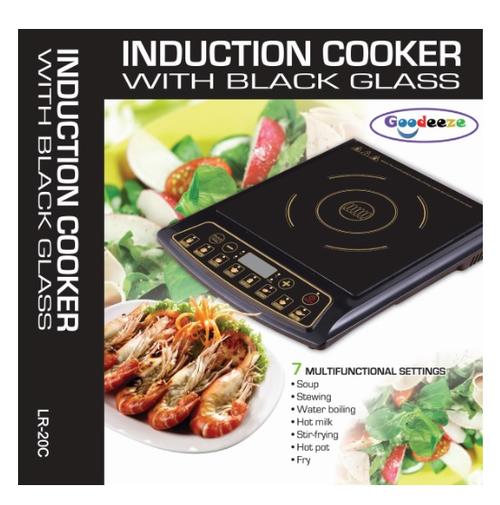This item has closed 2 buyers bought 3 items
Induction Cooker
New
Indicative market price: R800
R550.00
31% OFF
Closed
7 Nov 14 16:00
Shipping
Standard courier shipping from R30
R30 Standard shipping using one of our trusted couriers applies to most areas in South Africa. Some areas may attract a R30 surcharge. This will be calculated at checkout if applicable.
Check my rate
Check my rate
Ready to ship in
The seller has indicated that they will usually have this item
ready to ship within 3 business days. Shipping time depends on your delivery address. The most
accurate delivery time will be calculated at checkout, but in
general, the following shipping times apply:
Standard Delivery
| Main centres: | 1-3 business days |
| Regional areas: | 3-4 business days |
| Remote areas: | 3-5 business days |
Buyer Protection
How you're covered
Get it now, pay later
Product information
Condition:
New
Location:
South Africa
Customer ratings:
Product code:
LR -20C
Bob Shop ID:
163127182

Induction Stove is ideal for any kitchen. While cooking 64% faster, you save up-to 52% on electricity!
An induction cooker uses a type of induction heating for cooking. It is chiefly distinguished from other common forms of stovetop cooking by the fact that the heat is generated directly in the cooking vessel, as opposed to being generated in the stovetop by electrical coils or burning gas. ...
To serious cooks, the most important favorable point about induction cookers--given that they are as or more "powerful" at heating as any other sort--is that you can adjust the cooking heat instantly and with great precision. Before induction, good cooks, including all professionals, overwhelmingly preferred gas to all other forms of electric cooking for one reason: the substantial "inertia" in ordinary electric cookers--when you adjust the heat setting, the element (coil, halogen heater, whatever) only slowly starts to increase or decrease its temperature. With gas, when you adjust the element setting, the energy flow adjusts instantly.
But with induction cooking the heat level is every bit as instantaneous--and as exact--as with gas, yet with none of the many drawbacks of gas (which we will detail later). Induction elements can be adjusted to increments as fine as the cooker maker cares to supply, just like gas, and--again very important to serious cooks--such elements can run at as low a cooking-heat level as wanted for gentle simmering and suchlike (something even gas is not always good at). Someday, perhaps not so many years away, the world will look back on cooking with gas as we today look on cooking over a coal-burning kitchen stove.
With induction cooking, energy is supplied directly to the cooking vessel by the magnetic field; thus, almost all of the source energy gets transferred to that vessel. With gas or conventional electric cookers (including halogen), the energy is first converted to heat and only then directed to the cooking vessel--with a lot of that heat going to waste heating up your kitchen (and you) instead of heating up your food. (The striking image at the left shows how precisely focussed heat generation is with induction--ice remains unmelted on an induction element that is boiling water!)
As a comparison, 40%--less than half--of the energy in gas gets used to cook, whereas with induction 84% percent of the energy in the electricity used gets used to cook (and the rest is not waste heat as it is with gas). There are two important heat-related consequences of that fact:
cooler kitchens: of course the cooking vessel and the food itself will radiate some of their heat into the cooking area--but compared to gas or other forms of electrically powered cooking, induction makes for a much cooler kitchen (recall the old saying: "If you can't stand the heat, get out of the kitchen."); and,
- a cool stovetop: that's right! The stovetop itself barely gets warm except directly under the cooking vessel (and that only from such heat as the cooking vessel bottom transfers). No more burned fingers, no more baked-on spills, no more danger with children around. (The photo at the right--one of several similar ones to be found on the web--shows, like the one above, how only the cooking vessel does the actual cooking.)